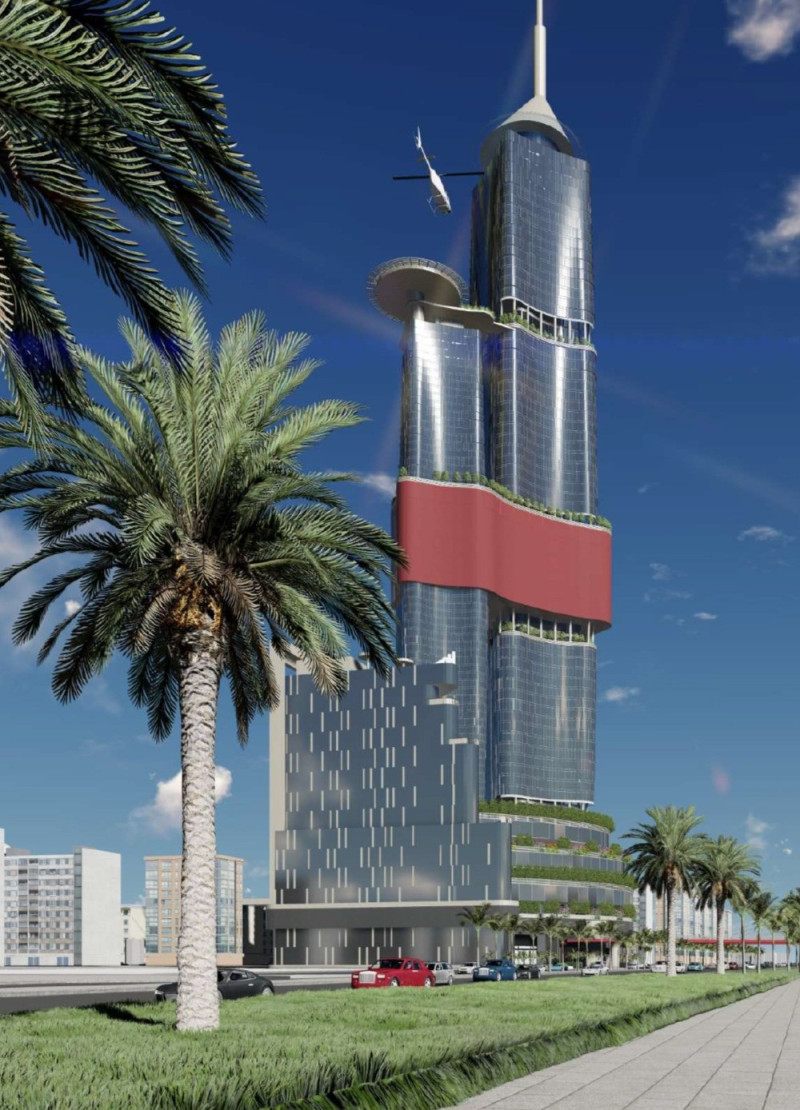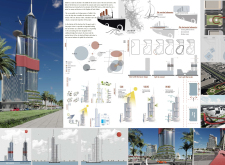5 key facts about this project
The design in Jeddah, Saudi Arabia, draws inspiration from the city’s relationship with the sea and ships, often referred to as the “Bride of the Red Sea.” This connection influences the layout and functionality of the spaces, catering to residents and visitors alike. The project includes several key components, such as Residential Tower 1, a Public Tower Connection, Tower 2, and a Public Hotel. Together, they create an integrated urban community that prioritizes social interaction and accessibility.
Design Integration
Linking bridges connect streets and gardens, fostering an atmosphere for community engagement. The arrangement includes both vertical and horizontal elements that enhance the visual appeal and guide movement through the space. Eye-catching design invites exploration, making the outdoor areas vibrant and welcoming for various gatherings.
Sustainability and Efficiency
Natural ventilation is a crucial aspect of the design. Openings allow for fresh air movement which enhances comfort and reduces reliance on mechanical cooling systems. Passive shading is thoughtfully applied to south-facing façades, maximizing solar exposure for energy efficiency. This also adds a rich layer of texture to the overall building design.
Environmental Considerations
The incorporation of gray water recycling systems highlights a commitment to sustainability. This practice addresses water conservation and supports responsible resource management. By integrating these ecological strategies, the design embraces modern environmental practices while providing a functional living space.
Architectural Expression
The building form is designed to optimize views on all sides, fostering a sense of openness within the urban environment. This focus on visual connectivity not only enhances the experience for users but also helps the architecture blend into its context. As sunlight shifts throughout the day, its interaction with the structure’s surfaces creates changing patterns, offering a dynamic quality that enriches the overall experience.



















































